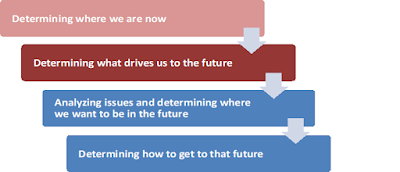This article is based on the author's 2017 EDUCAUSE Annual Conference seminar, "Data-Driven IT Strategic Planning for Data-Driven IT Leaders."
A new framework offers a system for defining, collecting, analyzing, and organizing data for IT strategic planning.
 |
| Photo: Jerry Grochow |
 |
| Photo: EDUCAUSE Review |
The 2016 EDUCAUSE Center for Analysis and Research working group report New Approaches to Higher Education IT Strategic Planning included recommendations to "identify, review, and discuss both internal and external change drivers" and "collect data on technology needs and desires and incorporate those into the plan." Further, data-driven IT strategic planning was the EDUCAUSE Strategic Planning constituent group's theme at the 2016 EDUCAUSE Annual Conference.
While these activities all aim to improve the IT strategic planning process, the idea of true data-driven strategic planning is still discussed only at the general level without a detailed implementation framework. This article provides such a framework.
Strategic planning projects require significant upfront investment — including for gathering materials, developing agendas, and surveying the community — to support project participants in their efforts. Key to that support is developing appropriate, carefully analyzed, and thoughtfully presented data to help produce a plan that best serves the community. Those data provided must
- portray the current state of systems and technology,
- highlight important internal and external trends and issues in how IT services are used and provisioned,
- demonstrate how IT impacts the institution's administration and its research and teaching missions, and
- reveal questions that must be resolved to establish the university's best IT strategic direction.
Strategic Planning Overview
A strategic plan is a framework for describing the organization's key processes, people, and technologies at a specific time in the future (typically 3–5 years) and how the organization can reach that future, given its current processes, people, and technologies. To ensure that the plan serves its purpose, the institution — as embodied in its strategic planning team — must fully understand its current state, as well as the factors that will impact and drive it into the desired future state. Figure 1 shows the major components of the strategic planning process.
 |
| Figure 1. Components of the strategic planning process |
So, the first step in any strategic planning process is to determine where you are now, or the current state. Once you know that, you can begin to look at factors that are driving you to the future and begin discussing how those drivers will (or should) impact the institution.
For example:
- Will changes in teaching pedagogy (such as the flipped classroom) significantly affect the IT support infrastructure for faculty and students?
- Will new research areas such as genomics or cosmology require research computing capability beyond what the university currently possesses?
- Will the move to cloud-based computing change the basis for IT budgeting across university departments?
- Will changes in the federal funding picture alter the focus of funding sources and thereby impact IT strategy?
Read more...
Source: EDUCAUSE Review










